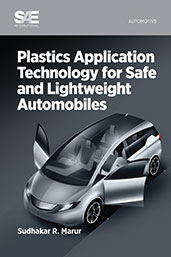Technical Paper
Hybrid ‘Thermoplastics and Steel’ Bumper Beam Solution to Protect the Vehicle in Low Speed Crashes
2010-04-12
2010-01-1009
Improving passenger car damageability has been an important topic for The Insurance Institute for Highway Safety (IIHS) and the Research Council for Automotive Repairs (RCAR) council. Incorporation of new IIHS/RCAR barrier (Rigid bumper shaped barrier fitted with an energy absorbing material and cover) in ‘Bumper Structural Test protocols’ closely replicates the damage patterns observed in real world low-speed crashes. Inclusion of new IIHS/RCAR barrier impact (10kmph speed) test, along with IIHS and RCAR bumper test protocols, redefines the development of countermeasures for low speed damageability. In this paper an innovative cost effective, and lightweight, hybrid bumper beam solution is proposed with thermoplastics and steel, to meet IIHS and RCAR impact requirements including new IIHS/RCAR barrier impact test protocols.

